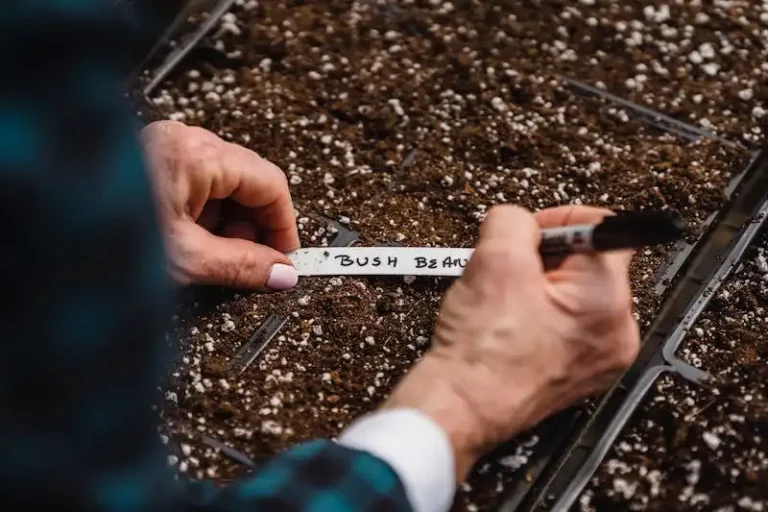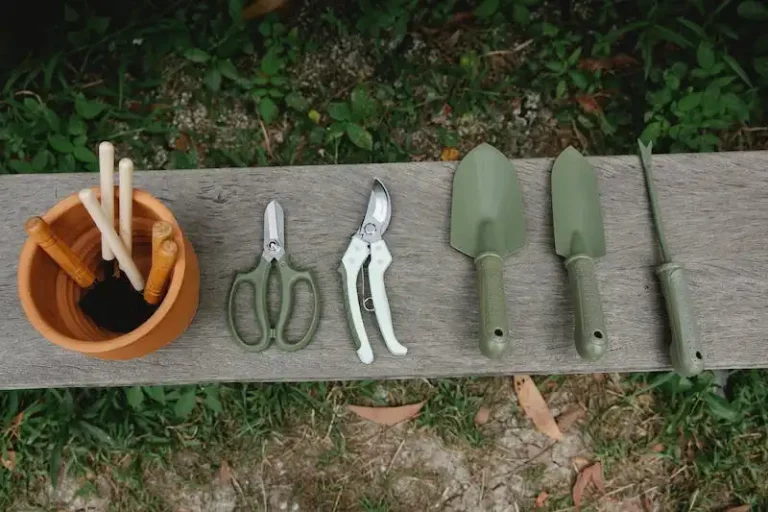Looking to expand your garden with beautiful Asiatic lilies? You’re in luck! These stunning flowers can be easily propagated using a variety of methods. Whether you prefer vegetative propagation or growing from seed, there’s a way for every gardener to successfully propagate and enjoy these gorgeous blooms.
One of the easiest and most common methods of Asiatic lily propagation is through division. This involves separating the offshoots, or bulbils, from the parent plant and replanting them. You can do this in spring or fall, taking care to dig up the parent plant and gently separate the bulbils from the main bulb. Make sure to leave some foliage attached to the bulbils to allow for proper development.
Another way to propagate Asiatic lilies is through seed. This method requires a bit more patience, as it can take up to four years for the seeds to grow into flowering plants. To start, collect the ripe seed pods from the lilies in the fall. Remove the seeds from the pods and wash them well to remove any pulp or debris. Then, moisten a paper towel and place the seeds on it. Fold the towel over the seeds and place it in a plastic bag. Store the bag in the refrigerator for a few months before planting the seeds in a well-drained soil mixture.
If you’re looking for a quicker way to propagate Asiatic lilies, consider using tissue culture. This method involves taking a small piece of tissue from the mother plant and placing it in a sterile nutrient medium. Over time, the tissue will develop into a new plant that can be transplanted into the garden. This method is especially useful for propagating rare or virus-free varieties.
Regardless of the method you choose, propagating Asiatic lilies is a rewarding endeavor that will allow you to enjoy these beautiful flowers for years to come. Whether you opt for division, seed propagation, or tissue culture, you’ll be amazed at the abundance of blooms that can be produced from just a single plant. So get started today and watch your garden flourish with the vibrant colors and graceful beauty of Asiatic lilies!
For more information and frequently asked questions about Asiatic lily propagation, visit our blog where you’ll find helpful tips and advice. Don’t miss out on the opportunity to expand your garden with these stunning flowers.
How to Propagate Lilies from Bulbils
Lilies are beautiful flowering plants that can be propagated in various ways. One method of propagation is by using bulbils. Bulbils are small bulblets that form in the leaf axils or on the flower stems of certain lily varieties.
To propagate lilies from bulbils, start by digging up the mother plant in late summer or early fall when the foliage begins to die back. Carefully remove the bulbils from the plant, making sure to leave some attached to the mother bulb. These bulbils can then be planted in a separate location or shared with friends and family.
Before planting the bulbils, it is important to prepare the soil. Choose a well-draining location that receives at least six hours of sunlight each day. Dig a hole that is slightly larger than the bulbil and amend the soil with organic matter to improve drainage and fertility.
If you have many bulbils to plant, you can separate them into groups and plant them in clusters throughout the garden. This will create a stunning display of lilies when they bloom in the following season.
When planting the bulbils, place them about one to two inches apart and cover them with soil. Water the newly planted bulbils thoroughly and keep the soil consistently moist, but not waterlogged. Over time, the bulbils will develop into mature lily plants.
It is important to note that propagating lilies from bulbils requires patience and care. The bulbils may take several months to develop into mature plants, so it is important to provide them with the necessary conditions for optimal growth.
If you have any further questions about propagating lilies from bulbils, ask a knowledgeable gardener or check with your local nursery for specific guidelines. Happy gardening!
Asiatic Lily Propagation How To Propagate An Asiatic Lily Plant
Asiatic lilies are beautiful and vibrant flowers that many gardeners enjoy growing. If you are a fan of these lovely plants and wish to propagate them, there are several methods you can use. One such method is through tissue culture, which involves taking a small piece of tissue from the parent plant and allowing it to develop into a new plant.
To begin the process of tissue culture, you will need a tiny piece of tissue from the parent plant. This tissue can be taken from the stem or foliage and should be about the size of a small pea. Once you have obtained the tissue, it can be placed in a sterile mixture of hormones and nutrients to encourage root and shoot development.
Another method of propagating Asiatic lilies is through division. This involves digging up the plant and separating the bulbs into smaller sections. Each section should have at least three stems and a clump of roots attached. Once divided, the bulbs can be planted back in the ground or pots to develop into new plants.
If you prefer a more natural method of propagation, you can also grow Asiatic lilies from seeds. Lily seeds can be collected from the plant once the seed pods have turned yellow and begun to split. The seeds should then be dried and stored in a cool, dry place until planting season.
It is important to note that growing lilies from seed can be a bit more challenging, as it typically takes several years for the plants to reach maturity and produce flowers. However, this method can be rewarding for patient gardeners who enjoy the excitement of watching their plants grow from tiny seeds into beautiful blooms.
One final method of propagating Asiatic lilies is through the use of bulbils. Bulbils are small, blackcurrant-like structures that form along the stem of the plant. They can be carefully removed and planted in a separate location to develop into new plants. This method is similar to division, but instead of separating the bulbs, you are separating the bulbils.
As you can see, there are several methods you can use to propagate Asiatic lilies. Whether you choose tissue culture, division, seed propagation, or bulbils, each method has its own unique requirements and benefits. By understanding these methods, you can expand your lily collection and enjoy the beauty of these flowers in even greater abundance.
| Propagation Method | Description |
| Tissue Culture | This method involves taking a small piece of tissue from the parent plant and allowing it to develop into a new plant. |
| Division | This method involves digging up the plant and separating the bulbs into smaller sections. |
| Seed Propagation | This method involves collecting and planting seeds from the lilies. |
| Bulbils | This method involves separating and planting small, blackcurrant-like structures that form along the stem of the plant. |
How to Propagate Asiatic Lily Plants
Propagating Asiatic lily plants can be easily done through different methods. One of the most common ways to propagate these plants is by digging up the bulbils that develop on the stems. These bulbils can be collected throughout the growing season and planted separately to create new plants.
Another method of propagation is by dividing the bulbs. This can be done every few years, or when the plant has become too overcrowded. To divide the bulbs, dig up the lilies and separate them into individual bulbs. Make sure to leave some foliage attached to each bulb for better development.
The best time to propagate Asiatic lilies is in the beginning of spring, around April. This allows the plants enough time to establish themselves before the winter months. When dividing the bulbs, be sure to place them at least two inches apart to give them enough space to grow.
If you’re wondering what to do with the bulbils or divisions, they can be planted in a different location or given to fellow gardeners who are interested in growing Asiatic lilies. These plants are perennial, so they will continue to bloom year after year.
One important thing to note is that Asiatic lilies should not be confused with Japanese lilies (Lilium japonicum) or Hemerocallis. While they are all part of the Lilium genus, they have different characteristics and require different care.
In conclusion, propagating Asiatic lily plants can be a fun and rewarding experience. Whether you choose to collect bulbils or divide the bulbs, you’ll be able to create new plants that will continue to beautify your garden for years to come.
FAQs:
Question: How do I know when to collect bulbils from the plants?
Answer: Bulbils can be collected from the plants throughout the growing season. They can be harvested when they have reached a size of about four inches in diameter.
Question: Where should I plant the bulbils or divisions?
Answer: The bulbils or divisions should be planted in a location that receives ample sunlight and has well-drained soil. It’s best to plant them in a separate area from the parent plants.
Question: How long does it take for the new plants to grow?
Answer: The new plants will start to grow within a few months of planting. However, it may take a couple of years for them to reach their full maturity and start blooming.
Question: Can I propagate Asiatic lilies through other methods?
Answer: Yes, besides bulbils and divisions, Asiatic lilies can also be propagated through seeds, although this method takes longer and is less commonly used by gardeners.
Question: When is the best time to divide the bulbs?
Answer: The best time to divide the bulbs is in the early spring or after the plants have finished blooming in the summer. This allows the new divisions to establish themselves before the winter months.
Question: How many divisions should I make from one parent plant?
Answer: It’s recommended to make at least two divisions from one parent plant. This ensures that each division has enough resources to grow and thrive.
Question: Can I propagate Asiatic lilies in containers or pots?
Answer: Yes, Asiatic lilies can be grown in containers or pots. However, they may not grow as big or as fast as those planted in the ground.
Question: What should I do with the foliage or leaves attached to the bulbs when dividing them?
Answer: When dividing the bulbs, leave some foliage or leaves attached to each bulb. This helps with the bulb’s development and provides it with energy for future growth.
Question: Can I propagate Asiatic lilies from cuttings?
Answer: While it’s technically possible to propagate Asiatic lilies from stem cuttings, it is not the most common or easiest method. Bulbils and divisions are generally the preferred ways to propagate these plants.
Question: Is there a specific way to plant bulbils or divisions?
Answer: The bulbils or divisions can be planted at the same depth as the parent bulbs. Make sure to provide them with enough water and care until they establish themselves.
Question: Can I propagate Asiatic lilies in the fall?
Answer: While it’s possible to propagate Asiatic lilies in the fall, it’s generally not recommended. The plants need time to establish themselves before the winter months, and planting them in the fall may not give them enough time to do so.
Question: Will propagating Asiatic lilies make them grow faster?
Answer: Propagating Asiatic lilies will not necessarily make them grow faster. The growth rate of the new plants will depend on various factors such as the growing conditions and the care provided.
Question: What is the difference between Asiatic lilies and Oriental lilies?
Answer: Asiatic lilies are known for their wide range of colors and hardiness, while Oriental lilies are prized for their fragrance and larger blooms. The two types belong to the same Lilium genus but have different characteristics.
Question: What is the easiest way to propagate Asiatic lilies?
Answer: The easiest way to propagate Asiatic lilies is by collecting and planting the bulbils that develop on the stems. This method requires less effort compared to dividing the bulbs.
Question: What should I do with the bulbils or divisions during winter?
Answer: It is important to protect the bulbils or divisions during winter. You can cover them with a layer of mulch or move them to a frost-free location until the weather improves.
Question: Can I propagate Asiatic lilies from seeds?
Answer: While Asiatic lily seeds can be collected and planted, this method takes longer and is not as commonly used as propagating through bulbils or divisions.
Question: When can I separate the bulbils from the parent plant?
Answer: The bulbils can be separated from the parent plant when they have reached a size of about four inches in diameter. This is typically done in the late summer or early fall.
Question: How many bulbils can I collect from one Asiatic lily plant?
Answer: The number of bulbils you can collect from one Asiatic lily plant can vary. Some plants may produce many bulbils, while others may not produce any at all. It’s best to check the plants regularly throughout the growing season for bulbil development.
Question: Where can I find more information about propagating Asiatic lilies?
Answer: For more information about propagating Asiatic lilies and other gardening tips, you can visit gardening blogs or consult gardening books and guides.




